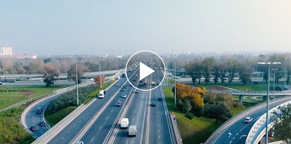Helpful Tips For Living In The United States

Simple things that will help an expatriate with everyday life.
Moving to another country comes with months of planning and organization. You will be given advice on how to handle many important factors in your move from buying a house to enrolling your children in school. However, there are some differences that are often overlooked. Some tips to help:
Electricity:
Electrical systems differ around the world both in voltage and less critically, frequency. The physical plugs and sockets are also different and often incompatible. There are a few steps that you can take to ensure that they can be safely used.
- Power is 120 volts
- Flat blade plugs are used
- Easily obtainable adapters convert your electrical needs
Measurements:
Simple measurement conversions to keep in mind:
Weights:
- 1 Ton (t) = 1016 kilograms (kg)
- 1 Ounce (oz)= 28 grams (g)
- 1 Pound (lb)= .460kg
- 20 lb= 1kg
Distance:
- 1 inch (in)= 2.5 centimeters (cm)
- 1 foot (ft)= 31 cm
- 1 yard (yd)= 91 cm
- 1 mile (mi)= 1.609 kilometers (km)
Volume:
- 1 pint (pt)= .570 litre (l)
- 1 U.S. gallon= 3.754 l
Tipping Etiquette:
Tipping is not mandatory; however, it is very common in the United States and expected in some circumstances for service. A tip is given to a person who performs good service. By law, you cannot be forced to tip, however customers are legally required to pay any charges that are clearly marked prior to service, which can include mandatory gratuities (also known as tips).
In the United States, there are many employees who rely largely on tips for compensation. It is suggested to tip between 15-20% and varies based on the situation and where you are located. Some examples of services where tipping is common include waiters, bartenders, taxis, valets, bellhops, doormen, hotel housekeeping/ maid service, spa, barbers and hairdressers/ manicurists.
Signs:
Driving in the U.S. may be a lot different from what you’re used to in your native country. From signs to lights, speed limits and lanes, there’s a lot to know before getting in the car. Signs are the main source of information, speed limits, and cautions. Ranging in various sizes and colors, each sign holds specific purposes in relation to the area of which they are in:
- Green signs with white letters: Most common and indicate information on a highway. They are located on the side of the road or are overhead and display the distance between where the sign stands and the destination a highway passes through.
- Blue signs with white letters: Hospitality signs indicate rest areas, hotels, food, and hospitals.
- Brown signs with white letters: Heritage signs indicate historical attractions, campgrounds, entertainment, and natural attractions.
- Red or Orange signs: Caution, danger or stop. These must be followed for your own safety and the safety of others.
- Yellow signs: Caution. These usually mean to slow down your car, but not come to a full stop. For example, they are used in rural areas around suburbs or schools to alert you that children may be walking in the area.
Basic Rules:
Obvious regulations such as following the signs or lights aren’t the only important rules to follow. There are certain U.S. driving customs to be aware of in order to ensure safety while on the road:
- You have to stop in BOTH directions for any school bus with flashing lights.
- At a stop sign, drivers proceed in the order in which they have arrived at the intersection.
- The leftmost lanes on the highways are considered to be the “fast” lanes and the rightmost lanes are considered to be the “slow” lanes. (If you are on a multi-lane highway and find traffic is passing you frequently you may want to move to the “slow” lane so you do not hold up traffic).
- You must stop for pedestrians at the crosswalk
- Making right turns on red signals is permitted in most areas unless there is a sign indicating not to do so (and the path is clear of oncoming vehicles or pedestrians).
- Do not instigate other drivers by slowing or speeding up to annoy them. This is known as “road rage” and may result in a ticket.
- Babies and small children should always be seated in the back seat of a car and should be seated in an age-appropriate child safety seat.
- Always wear the seat belt.
Note: Driving variations depend on where you are living. It is your responsibility to be aware of a particular state’s driving laws for your personal safety and decreasing the chance of receiving a violation ticket.
About International AutoSource:
For over 20 years, International AutoSource (IAS) has placed thousands of expats behind the wheel of their own vehicle. With over 50,000 customers and counting, IAS is the preferred global transportation provider. Whether relocating to the Americas, APAC or EMEA, IAS provides car leasing, financing, purchasing and all-inclusive rental solutions without an established credit history or driving record.
Through IAS, assignees save valuable time, money and resources, while our culture of service excellence helps ensure a more seamless transition. Expats are supported throughout the entire car buying experience with high-touch support from the vehicle selection process, finance application, to the completion of registration and delivery.
IAS serves corporate clientele, relocation partners, and customers directly, through a variety of programs and services offered. We strive not only to educate assignees on the transportation challenges when they relocate but also how IAS can help simplify the process. For companies, we offer a variety of consultative services such as corporate benchmarking, car allowances, global vehicle solutions, car rental management and more to ensure assignees are happy and productive upon their relocation.
For more information about International AutoSource, contact us at intlauto@intlauto.com or +1 516. 496.1816.





